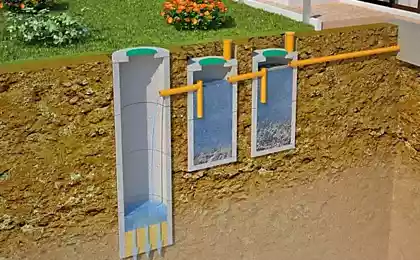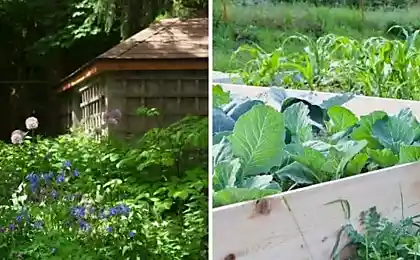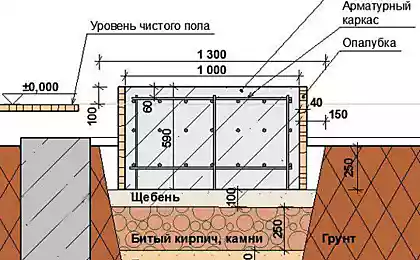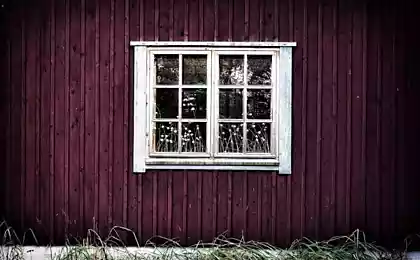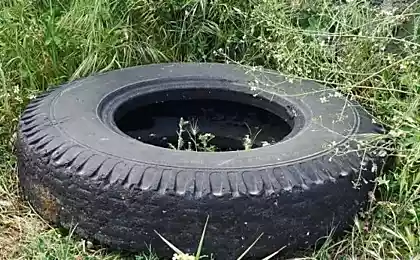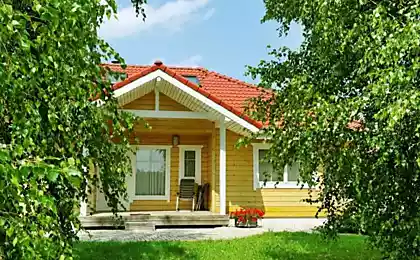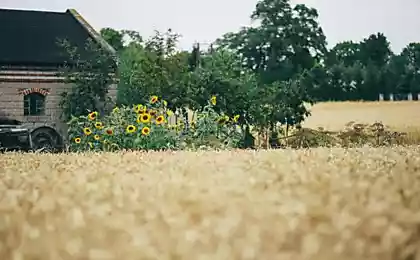615
15 useful tips for garden
Tip # 1
Between the beds of potatoes planted something from the legume family (peas, beans). The waste products of bacteria on the roots of these plants will be for potatoes nitrogenous fertilizer of natural origin!
Tip # 2
Beets despite its simplicity to the landing site, yet she has preferences. It should be well illuminated tonirovany the site, the light gives the root color. If the soil is acidic, laying the beds, make the ash with dolomite flour or lime. However, lime should be careful, as excess will lead to disease of the culture of scab.
Best predecessors – pumpkin, legumes and Solanaceae. In open ground seeds vicevice in the two approaches with an interval of two weeks (to be safe, if the first sowing will freeze). The soil for planting needs to be warmed up to 6°C and definitely hydrated.
To increase the sugar content of beets, some gardeners recommend watering a flower bed with a solution of table salt at the rate of 1H.l. per 10 liters of water (consumption on 1m. kV)
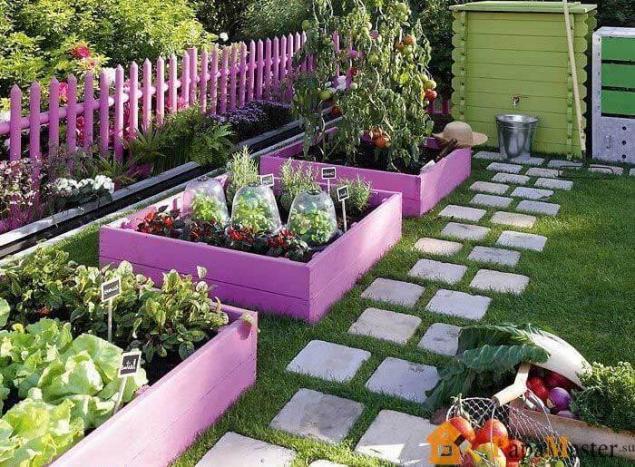
Tip # 3
For pest control the stems of the shrubs should be treated with mortar. At the same time pay attention to the fact that the lime should be diluted only in cold water. Very good after work, wash hands (to avoid skin burns).
Tip # 4
To save cucumbers and tomatoes from the powdery mildew, they need to be sprayed with a solution of milk (1 part milk to 9 parts water). The mixture covers the brilliant film the leaves and protects them from infection. Treatment should be carried out once a week.
Tip # 5
So slugs didn't eat cabbage, next to the garden beds need to dig in a container of regular beer: interest pests will instantly switch to drink, and the cabbage they now hardly remember...
Tip # 6
All types of cabbage, respond well to hilling, and it would be more roots and improve the conditions of supply.
Tip # 7
Kohlrabi is not recommended Spud, since this causes retardation of growth of stebleplod and degrades their quality.
Tip # 8
The root zone of the tomato to loosen finely, so as not to damage the roots. Pour tomatoes furrow, especially in cold weather. It is possible to avoid diseases, the shedding of flowers and ovaries. The fruits of tomato are stored longer if they are removed in the morning and put in series with the stalk upwards.
Tip # 9
The bushes of peppers grow well, and bloom profusely, so part of the top of the flowers and the shoots have to be removed. In hot humid weather pasynkovat pepper is a must, and on the contrary, in the hot, dry summer the plants do not passingout. With the sheet weight prevents the soil under the hive from moisture evaporation.
Tip # 10
Carrot seeds remain viable for only one to two years, and it is therefore necessary to check them in advance, as they begin to sprout only after two or three weeks. A sign that the seeds are fresh, is a nice "carrot" smell.
Tip # 11
Before ripening the upper part of the bulb preferably free, algreba soil.
Some believe that, to accelerate the maturation of follicles, you should stamp down tops. But it is wrong. Of flattened leaves, the remaining leaves substances are not able to go to a onion, deteriorate its quality.
To accelerate the ripening, bulbs with roots to lift the fork together with the soil and left in place until drying of foliage.
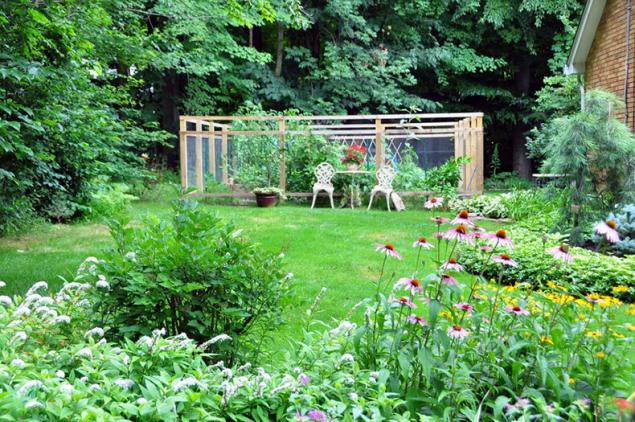
Tip # 12
Those who love green garlic should know that a particularly tender and tasty the portion of plants that is in the soil, and therefore the growth should be podatocite plants moist soil (the bleaching of the garlic).
Tip # 13
Gather the cucumbers every day, preferably twice a day — morning and evening. This will significantly increase plant productivity.
Tip # 14
All pumpkin plants form a large number of additional roots, which improves nutrition and increases the yield, so with the whips they need to go in some places to pin or cover with earth, so they formed additional roots. When loosening and cleaning the whip is not to shift from place to place.
SUPER fertilizer for a rich harvest of strawberries
How to get rid of rats and mice with herbs
Tip # 15
Why not plant radishes in June.
Radishes are fairly cold-resistant culture. It can withstand freezing down to -20 C. the Optimum temperature for growth of +18 C. Consider all possible options of seeding.
In the open ground radishes begin to sow from end of April – beginning of may. To a vegetable was always on your Desk, visivite seeds parts with an interval of 10-20 days. Radishes can be sown virtually all summer, except for June. Why? Let's find out.
In June, the longest days. The optimal daylength for the normal development of roots is 8-10 hours. If the day length increases to 14 hours, the plant development begins to move to the reproduction. Radishes will go in the arrow will not allow roots or they will be very small and hard.
Early varieties time to ripen before the onset of long days.published
P. S. And remember, just changing your mind — together we change the world! ©
Source: vk.com/dacha_stroi?w=wall-90351338_70086
Between the beds of potatoes planted something from the legume family (peas, beans). The waste products of bacteria on the roots of these plants will be for potatoes nitrogenous fertilizer of natural origin!
Tip # 2
Beets despite its simplicity to the landing site, yet she has preferences. It should be well illuminated tonirovany the site, the light gives the root color. If the soil is acidic, laying the beds, make the ash with dolomite flour or lime. However, lime should be careful, as excess will lead to disease of the culture of scab.
Best predecessors – pumpkin, legumes and Solanaceae. In open ground seeds vicevice in the two approaches with an interval of two weeks (to be safe, if the first sowing will freeze). The soil for planting needs to be warmed up to 6°C and definitely hydrated.
To increase the sugar content of beets, some gardeners recommend watering a flower bed with a solution of table salt at the rate of 1H.l. per 10 liters of water (consumption on 1m. kV)

Tip # 3
For pest control the stems of the shrubs should be treated with mortar. At the same time pay attention to the fact that the lime should be diluted only in cold water. Very good after work, wash hands (to avoid skin burns).
Tip # 4
To save cucumbers and tomatoes from the powdery mildew, they need to be sprayed with a solution of milk (1 part milk to 9 parts water). The mixture covers the brilliant film the leaves and protects them from infection. Treatment should be carried out once a week.
Tip # 5
So slugs didn't eat cabbage, next to the garden beds need to dig in a container of regular beer: interest pests will instantly switch to drink, and the cabbage they now hardly remember...
Tip # 6
All types of cabbage, respond well to hilling, and it would be more roots and improve the conditions of supply.
Tip # 7
Kohlrabi is not recommended Spud, since this causes retardation of growth of stebleplod and degrades their quality.
Tip # 8
The root zone of the tomato to loosen finely, so as not to damage the roots. Pour tomatoes furrow, especially in cold weather. It is possible to avoid diseases, the shedding of flowers and ovaries. The fruits of tomato are stored longer if they are removed in the morning and put in series with the stalk upwards.
Tip # 9
The bushes of peppers grow well, and bloom profusely, so part of the top of the flowers and the shoots have to be removed. In hot humid weather pasynkovat pepper is a must, and on the contrary, in the hot, dry summer the plants do not passingout. With the sheet weight prevents the soil under the hive from moisture evaporation.
Tip # 10
Carrot seeds remain viable for only one to two years, and it is therefore necessary to check them in advance, as they begin to sprout only after two or three weeks. A sign that the seeds are fresh, is a nice "carrot" smell.
Tip # 11
Before ripening the upper part of the bulb preferably free, algreba soil.
Some believe that, to accelerate the maturation of follicles, you should stamp down tops. But it is wrong. Of flattened leaves, the remaining leaves substances are not able to go to a onion, deteriorate its quality.
To accelerate the ripening, bulbs with roots to lift the fork together with the soil and left in place until drying of foliage.

Tip # 12
Those who love green garlic should know that a particularly tender and tasty the portion of plants that is in the soil, and therefore the growth should be podatocite plants moist soil (the bleaching of the garlic).
Tip # 13
Gather the cucumbers every day, preferably twice a day — morning and evening. This will significantly increase plant productivity.
Tip # 14
All pumpkin plants form a large number of additional roots, which improves nutrition and increases the yield, so with the whips they need to go in some places to pin or cover with earth, so they formed additional roots. When loosening and cleaning the whip is not to shift from place to place.
SUPER fertilizer for a rich harvest of strawberries
How to get rid of rats and mice with herbs
Tip # 15
Why not plant radishes in June.
Radishes are fairly cold-resistant culture. It can withstand freezing down to -20 C. the Optimum temperature for growth of +18 C. Consider all possible options of seeding.
In the open ground radishes begin to sow from end of April – beginning of may. To a vegetable was always on your Desk, visivite seeds parts with an interval of 10-20 days. Radishes can be sown virtually all summer, except for June. Why? Let's find out.
In June, the longest days. The optimal daylength for the normal development of roots is 8-10 hours. If the day length increases to 14 hours, the plant development begins to move to the reproduction. Radishes will go in the arrow will not allow roots or they will be very small and hard.
Early varieties time to ripen before the onset of long days.published
P. S. And remember, just changing your mind — together we change the world! ©
Source: vk.com/dacha_stroi?w=wall-90351338_70086
Body care according to the biorhythms: choosing the optimal time
To be built in Armenia the region's first geothermal station
